Post by Citlaly Vazquez, undergraduate majoring in Public Health Clinical Science and minoring in Psychology and Interdisciplinary Neuroscience at Portland State University.
How did I get here?
I am a senior majoring in Public Health Clinical Science and minoring in Psychology and Interdisciplinary Neuroscience at Portland State University. I am also part of BUILD EXITO’s 6th cohort and on the pre-radiation therapy track. This spring, I will be presenting a study at the American Society of Pediatric Otolaryngology (ASPO) regarding the reliability of sleep endoscopies.

How and why did I end up on this path, given my somewhat unclear course choices? My parents immigrated to the United States before I was born and always emphasized the importance of education and how education and knowledge were the only inheritance they could provide.
I applied to PSU as a first-generation student with many uncertainties and a lack of direction in life. I knew I wanted to do something in the healthcare setting, but I was unsure what I specifically wanted to do. My first year as an undergraduate was mainly about finding myself and figuring out where I fit in. BUILD EXITO was a program that I decided to apply for on a whim. I never thought I would get in due to the competitive nature of the program and the feeling that I was just another average student among my high-achieving peers. Still, to my surprise, I got a call the following week that I had been accepted. I’m currently in a research placement at Oregon Health & Science University (OHSU), working on validating sleep questionnaires in children with Down Syndrome.
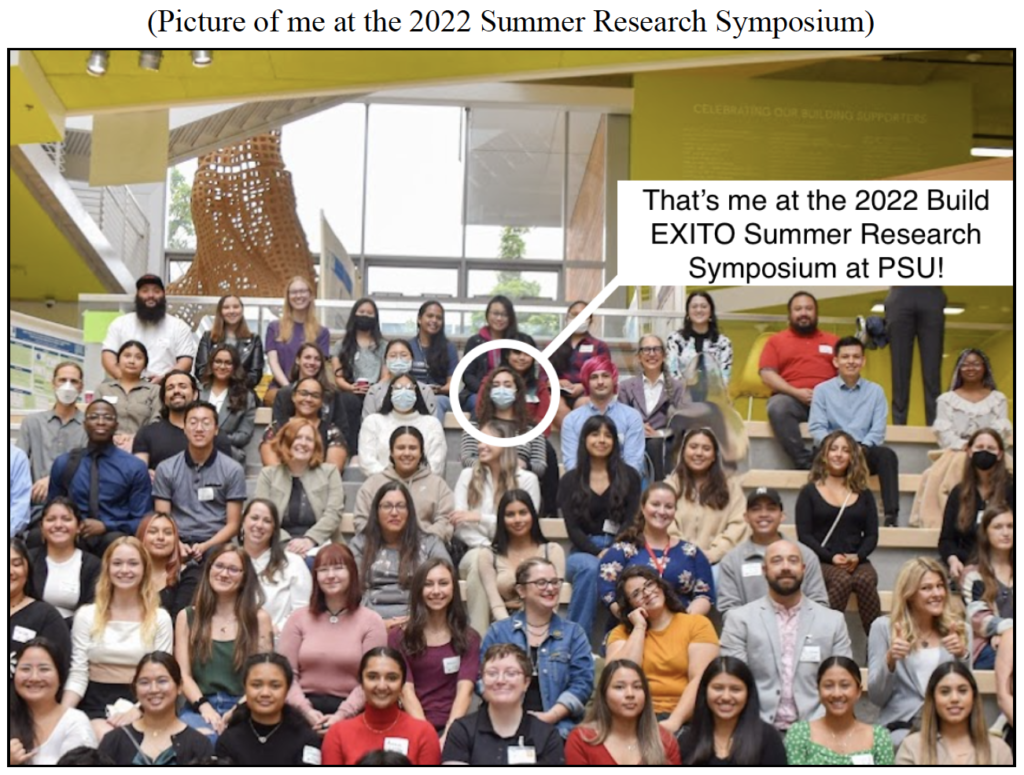
Background
Down Syndrome (DS), which occurs when there is an extra full or partial copy of chromosome 21,
is a common genetic disorder in the United States that affects approximately every 1 in 700 people.
Most parents discover that their child has DS when the mother is 11-14 weeks pregnant.
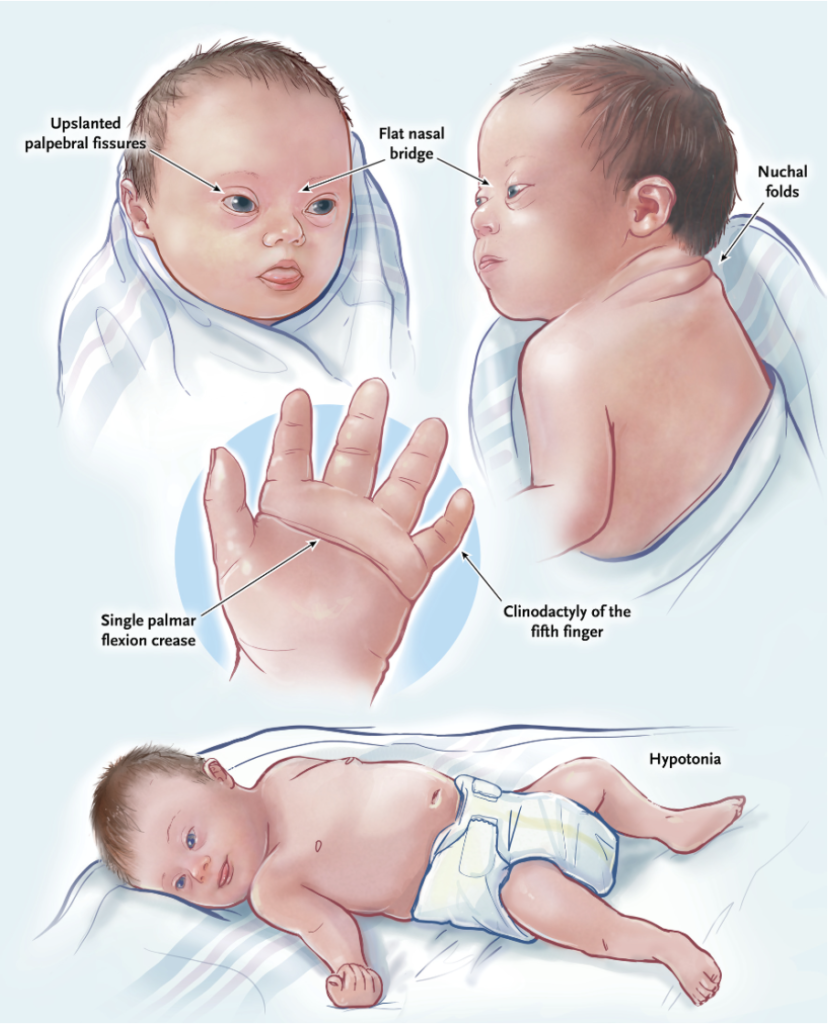
LEARN MORE: Down Syndrome (CDC)
LEARN MORE: Down Syndrome (Mayo Clinic)
Down syndrome is commonly associated with obstructive sleep apnea (OSA).
Obstructive sleep apnea occurs when a person repeatedly stops and starts breathing throughout the night due to upper airway obstruction. Common risk factors include obesity, family history, gender (males are 2-3x more likely to have OSA), increased age, and much more.
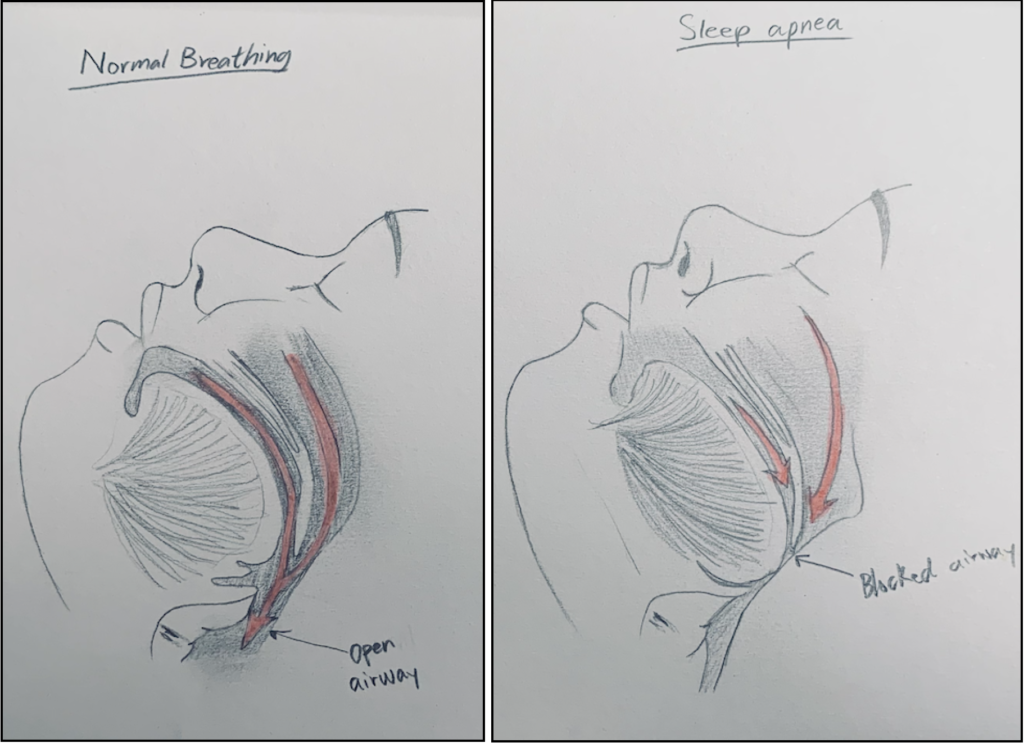
LEARN MORE: Obstructive Sleep Apnea
LEARN MORE: Obstructive Sleep Apnea (Johns Hopkins)
To put this into perspective, 53-76% of children with Down Syndrome will experience sleep apnea compared to 1-4% of children without down syndrome.
This higher percentage is mainly due to hypotonia which is a decreased muscle tone. In other words, poor facial muscle tone causes the airway to narrow or close as you breathe, which is something that the majority of the down syndrome population has.
LEARN MORE: Down Syndrome Related Muscle Hypotonia
LEARN MORE: Musculoskeletal anomalies in children with Down syndrome
Questionnaires
Two questionnaires are commonly used to determine whether someone with Down Syndrome has Obstructive Sleep Apnea:
-The Sleep Disordered Breathing Subscale of the Pediatric Sleep Questionnaire (PSQ): This is used to assess sleep in a child and asks questions about snoring, breathing habits (whether they start or stop breathing throughout the night), and weight.
-The OSA-18 Questionnaire: A quality of life survey related to sleep apnea that asks questions about the child’s behavior and sleep habits.
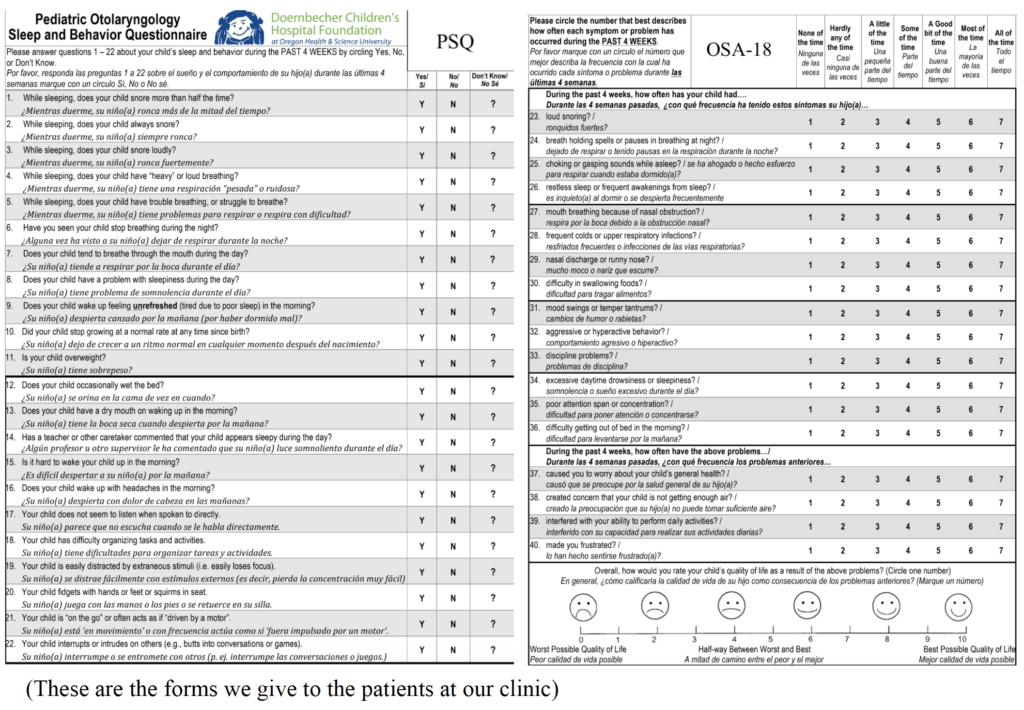
However, these questionnaires have not been validated for use in children with DS.
The main goal of this study is to assess the validity of these questionnaires and determine whether they can accurately diagnose OSA in the pediatric DS population. Hopefully, this data can help researchers and healthcare providers create more accurate screening questionnaires for the DS population and better guidelines for diagnosing OSA in pediatric DS patients.
LEARN MORE: Prevalence of Obstructive Sleep Apnea in Children With Down Syndrome
LEARN MORE: Sleep & Down Syndrome
LEARN MORE: Trends in management of obstructive sleep apnea in pediatric patients with Down syndrome
LEARN MORE: Obstructive sleep apnea in patients with Down syndrome: current perspectives
Who is eligible?
For a patient to be eligible, they have to be between the ages of 2-18 and speak either English or Spanish (mainly due to the fact that we don’t have information in other languages). If a family is interested and meets the qualifications, they are given both the OSA-18 and the PSQ questionnaires that are mentioned above, as well as some consent forms and a demographic form with general information about the family’s phone number, email, income, and education level. They are then referred to Dr.Lam and enrolled in a sleep study in which they will receive the OSA-18 and PSQ questionnaires again. This sleep study takes place at the Marriott Hotel with sleep medicine practitioners for a polysomnography (PSG) which is a sleep study.
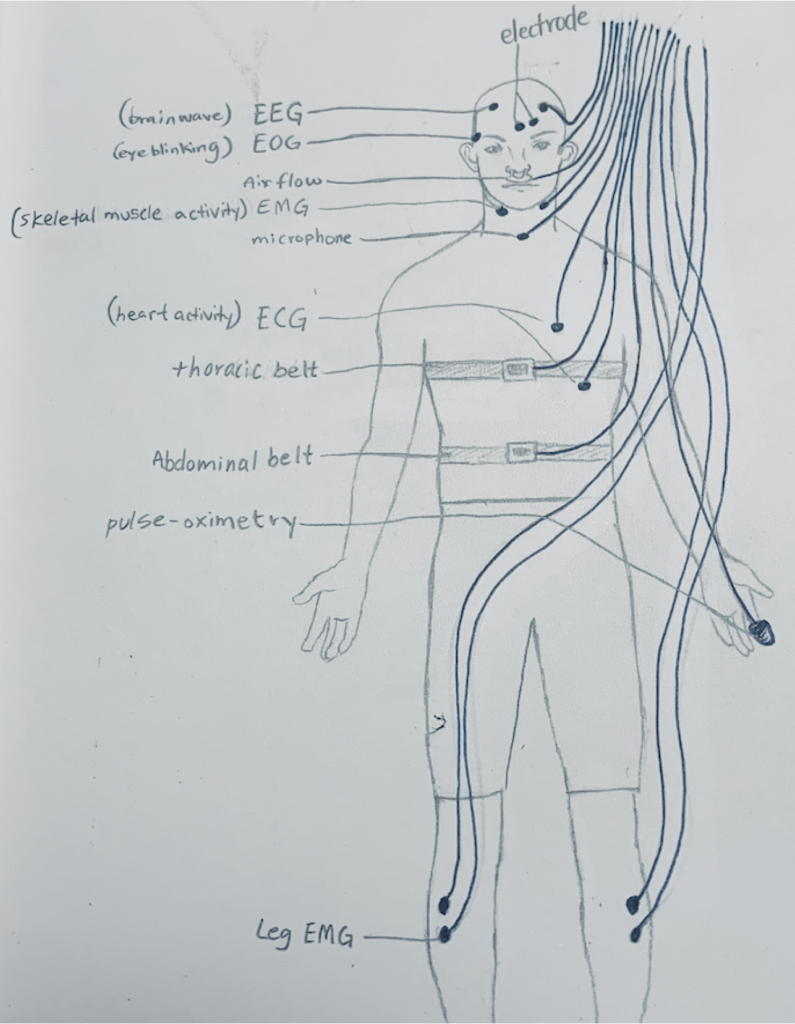
It all starts here!
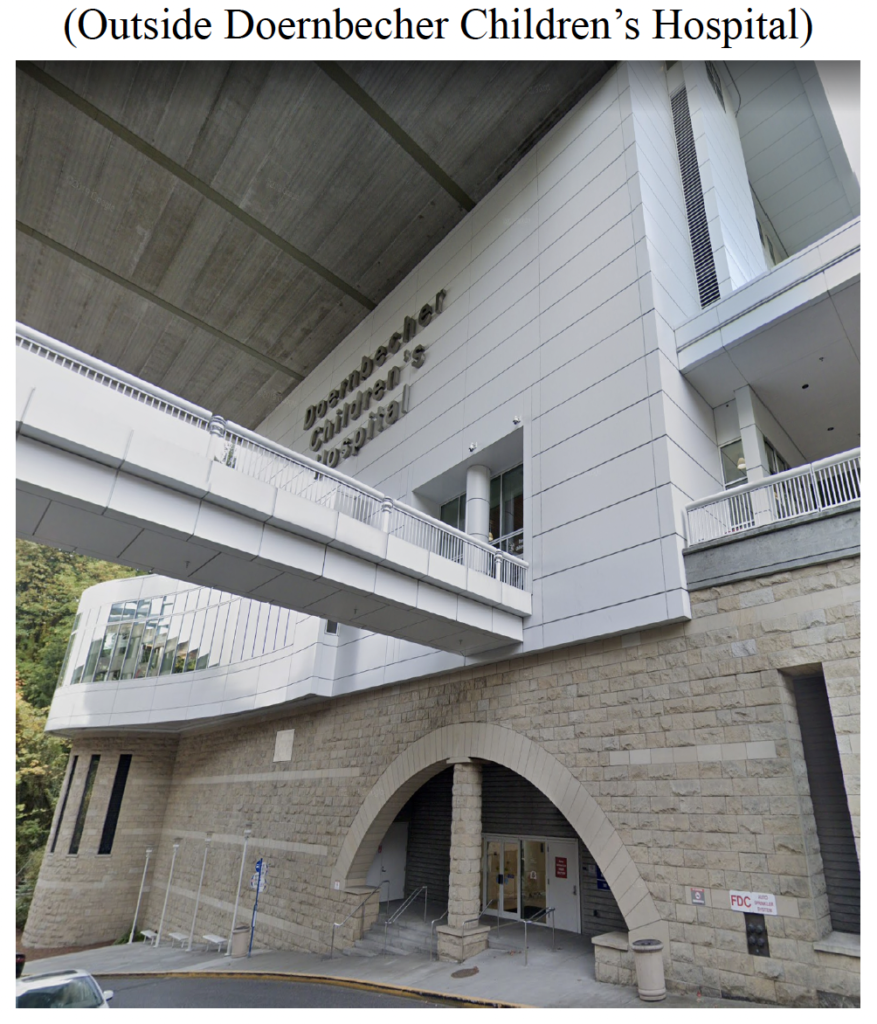
On Fridays, OHSU has a Down Syndrome Clinic from 8 AM to 5 PM for families whose children have down syndrome and are referred to OHSU for evaluation by a pediatric neurologist, occupational therapists, physical therapists, speech-language pathologists, and audiologists. Due to Covid, many things were changed or improved in patient care. For instance, work could be done remotely, and paperwork could be sent through email.
LEARN MORE: Down Syndrome Clinic at OHSU
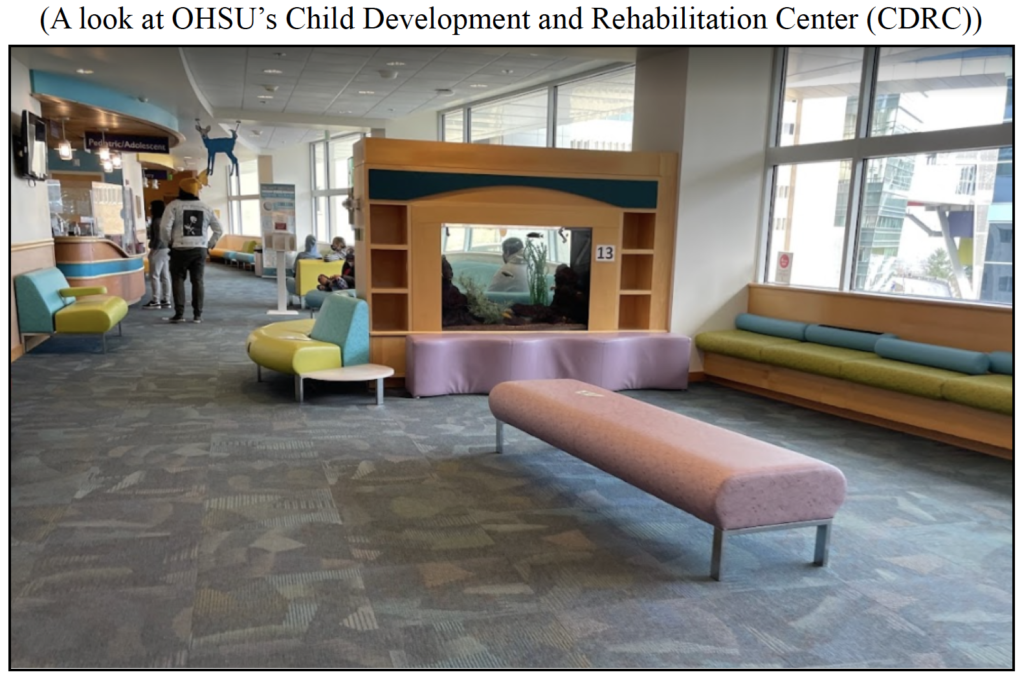
As part of BUILD EXITO, I was put in a research placement at OHSU with Dr. Derek J. Lam, an ENT otolaryngologist at OHSU. The study we are working on at the CDRC is named “(STUDY00018522): Validation of Sleep Questionnaires in the Down Syndrome Population”.
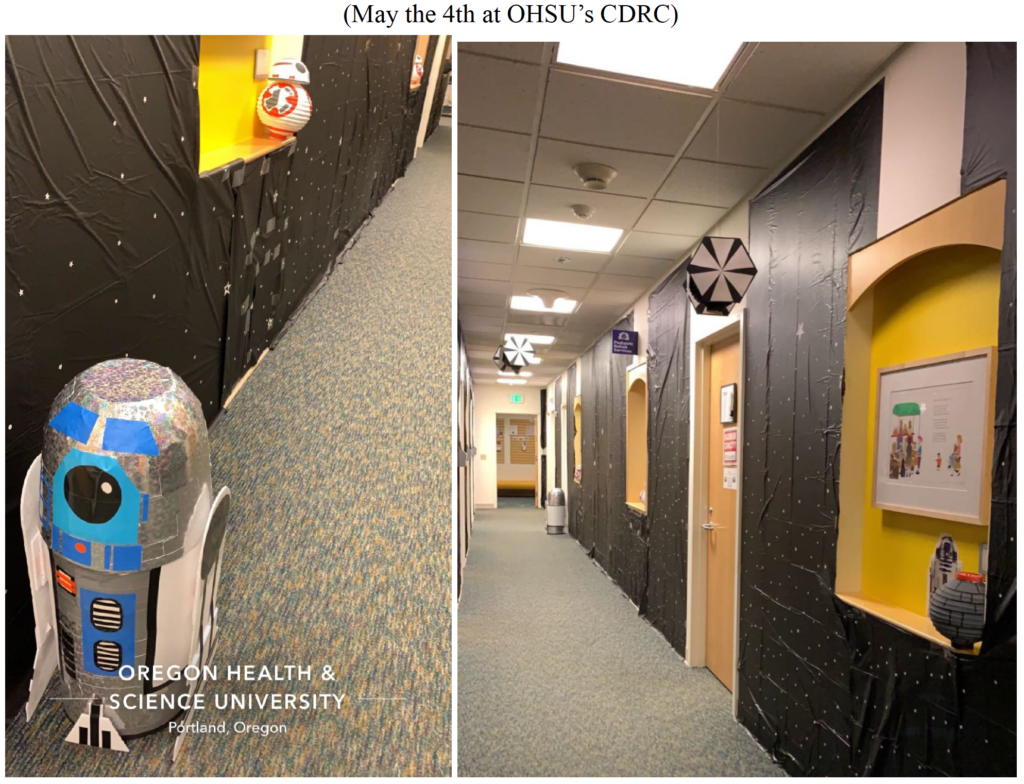
This study is being done to answer the following question: “Can we accurately diagnose sleep apnea in children with Down syndrome using specific questionnaires?” Due to Covid, many things were changed or improved in patient care. For instance, work could be done remotely, and paperwork could be sent through email. I typically arrive at the Down Syndrome clinic around 8 AM, depending on if there are eligible patients. This is done by logging onto a medical record database called Epic.
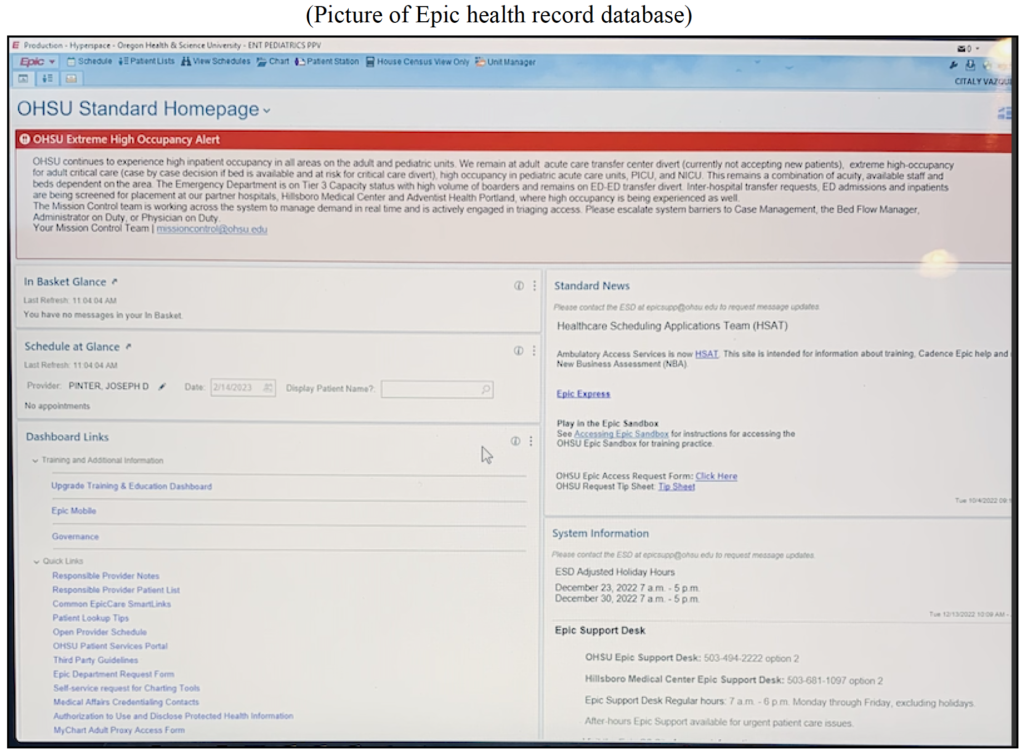
This database allows you to check someone’s appointments and medical records. This is what doctors, nurses, and everyone working in medicine use to record information like surgeries, blood pressure, or lab results. I usually log in a day before and figure out whether they fit the criteria of age and language. If a patient accepts to be part of a study after giving my introduction about the study, I enter them into a different database for research called RedCap.
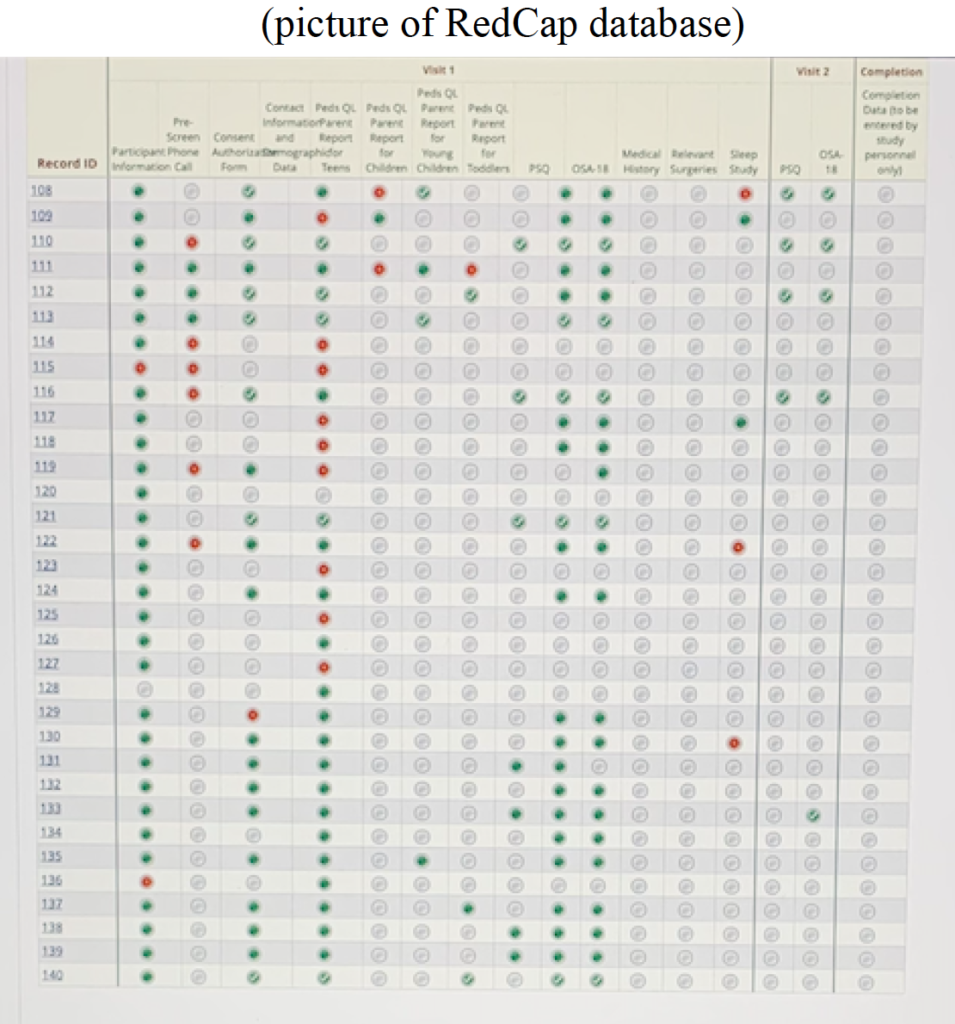
Green means that patients have completed the form or questionnaire in that area, while red or blank
circles mean that the patient has not completed the form. This website is important for researching
and documenting questionnaire answers and the PSG results. These answers are then taken and
coded/analyzed by my research mentor, Dr. Lam.
What’s next?
This is a study that has been ongoing for longer than I have been a student at PSU (about 4-5 years), so around the spring term, we are going to stop enrollment and start processing the data to see whether it brings answers to our questions.
My undergraduate experience was enriched by BUILD EXITO, something most students aren’t aware of. My experience with EXITO taught me to try even if you think you’ll get rejected. The worst that can happen is that you don’t get in. Plus there are many labs looking for bright and passionate researchers. Sometimes starting a conversation about someone’s experience in a lab or interest in their research can open doors to other people who may be able to help you grow as a scientist.
Learn More!
OHSU VOLUNTEER OPPORTUNITIES IN RESEARCH
URISE (Undergraduate Research Training Initiative for Student Enhancement)


